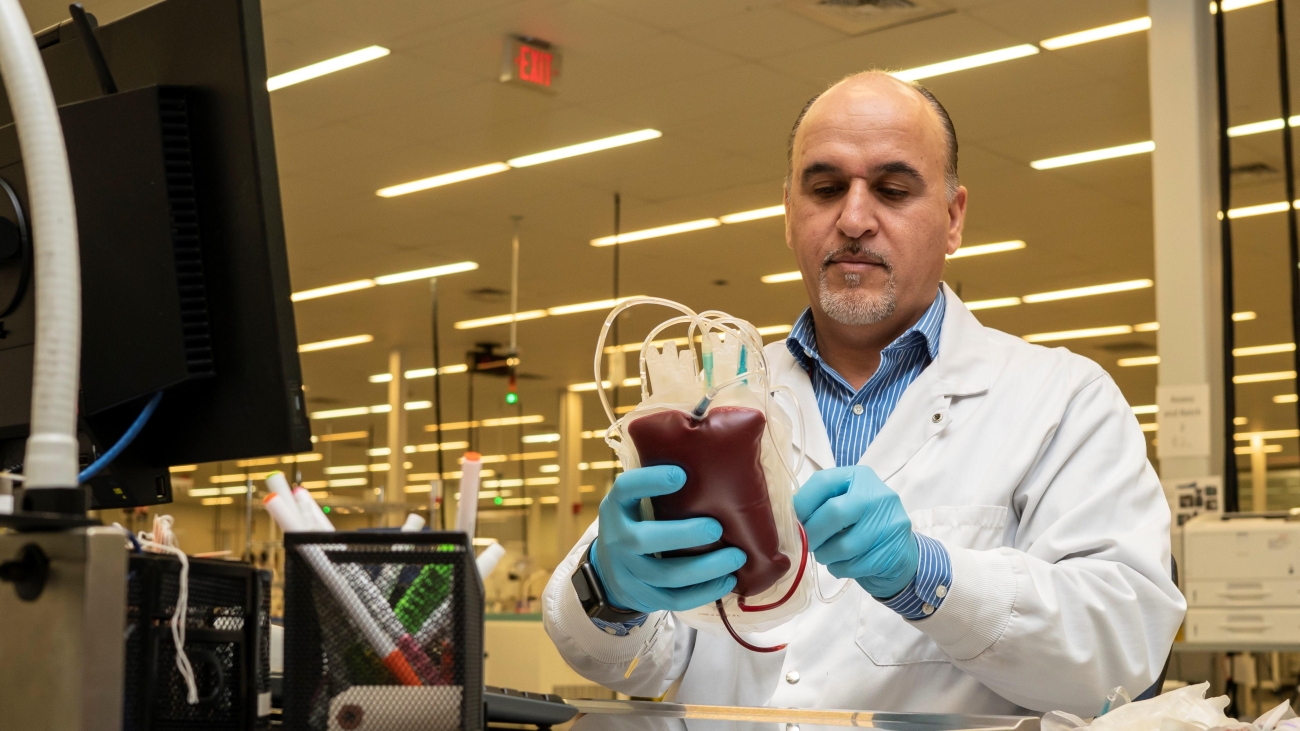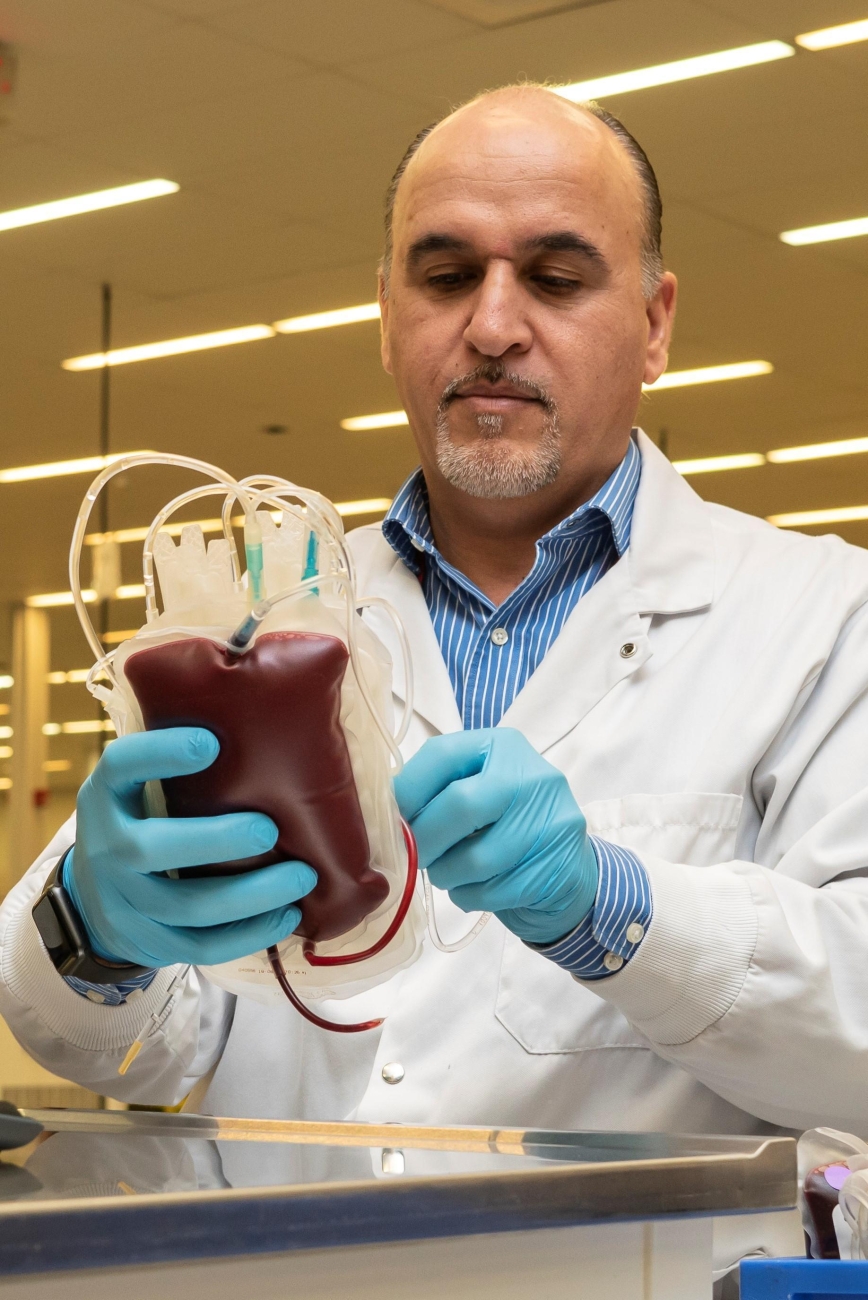
An employee at Canadian Blood Services receives donated blood.

Life on the line establishing Samer
If you’ve ever given blood, perhaps you’ve wondered where your donation went.
Maybe you imagined that plump little bag travelling right to the bedside of a patient in hospital. But the reality is even more amazing.


























































